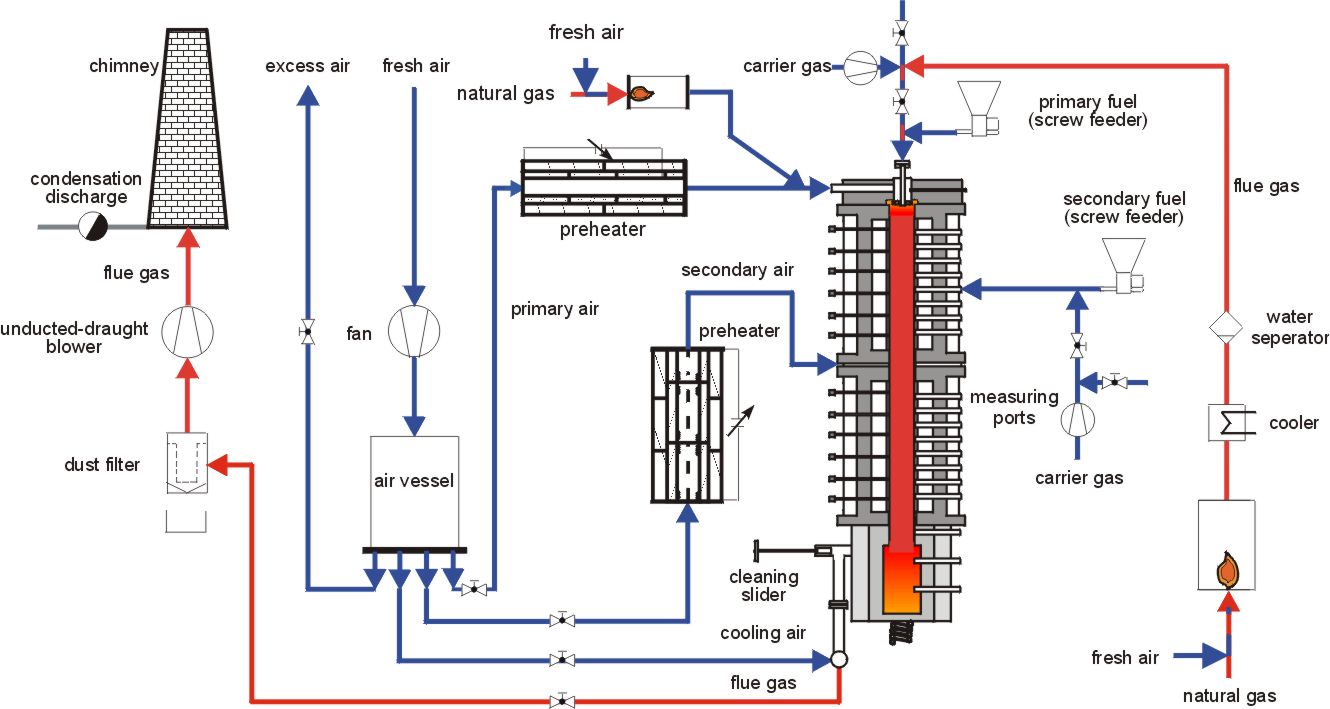Drop Tube Reactor
The isothermal Drop Tube Reactor was built to investigate the influence of operating parameters and fuel characteristics on the formation of gaseous pollutants. The reaction zone consists of a vertically mounted cylindrical ceramic tube of 150 mm id and a length of 2 m. The reaction tube is externally heated by 56 silicium carbide heating elements which ensure a uniform wall-temperature. To allow an individual heat supply for each area along the reaction zone, the heating elements are subdivided into six independent control units. The maximum operating temperature is limited to 1300 °C. Depending on the supplied gas flow the residence time of the coal particles varies from 1 to 6 s. 16 measuring ports allow the determination of the gas temperature and species concentration of the flue gas along the reactor. Additionally, the measuring ports allow the extraction of ash samples to obtain further data, e.g. the analysis of coal burn out. These ports can also be used for addition of secondary fuel, secondary air and additives. The burner itself is an axially mounted tube of 25 mm id, which can be shifted to the first measuring port. A screw feeder system is installed, allowing feeding rates up to 2 kg/h. The coal is fed into the burner tube and conveyed into the reactor via carrier air. The composition of the inlet gas may be varied either by addition of hot or cold simulated turbine exhausts or recirculation gas, produced by two natural gas burners, or by injecting additional gases, e.g. NOX, into the carrier gas stream. Additionally two air preheater are available. One preheater is combined with natural gas burner the manipulation of temperature and combustion gas composition within the top of the reactor. The second gas burner supplies the feeding of cold flue gas at any position of the reactor (also for the pneumatic feeding of the fuel). The second air preheater feeds hot air to the middle of the reactor. The pulverised coal combustor provides an unidimensional plug flow with neglectable axial gradients. Due to this fact, the gas residence time may directly be correlated to the distance from the burner. Due to the external heating the gas flow, the primary/secondary air ratio and the coal feeding rate can be varied over a wide range without affecting the local temperatures in the reaction tube. The following operating parameters may be altered: wall temperature, gas flow (residence time), coal feeding rate, inlet gas composition, primary/secondary air ratio (air staging) and primary/secondary fuel ratio (fuel staging).



